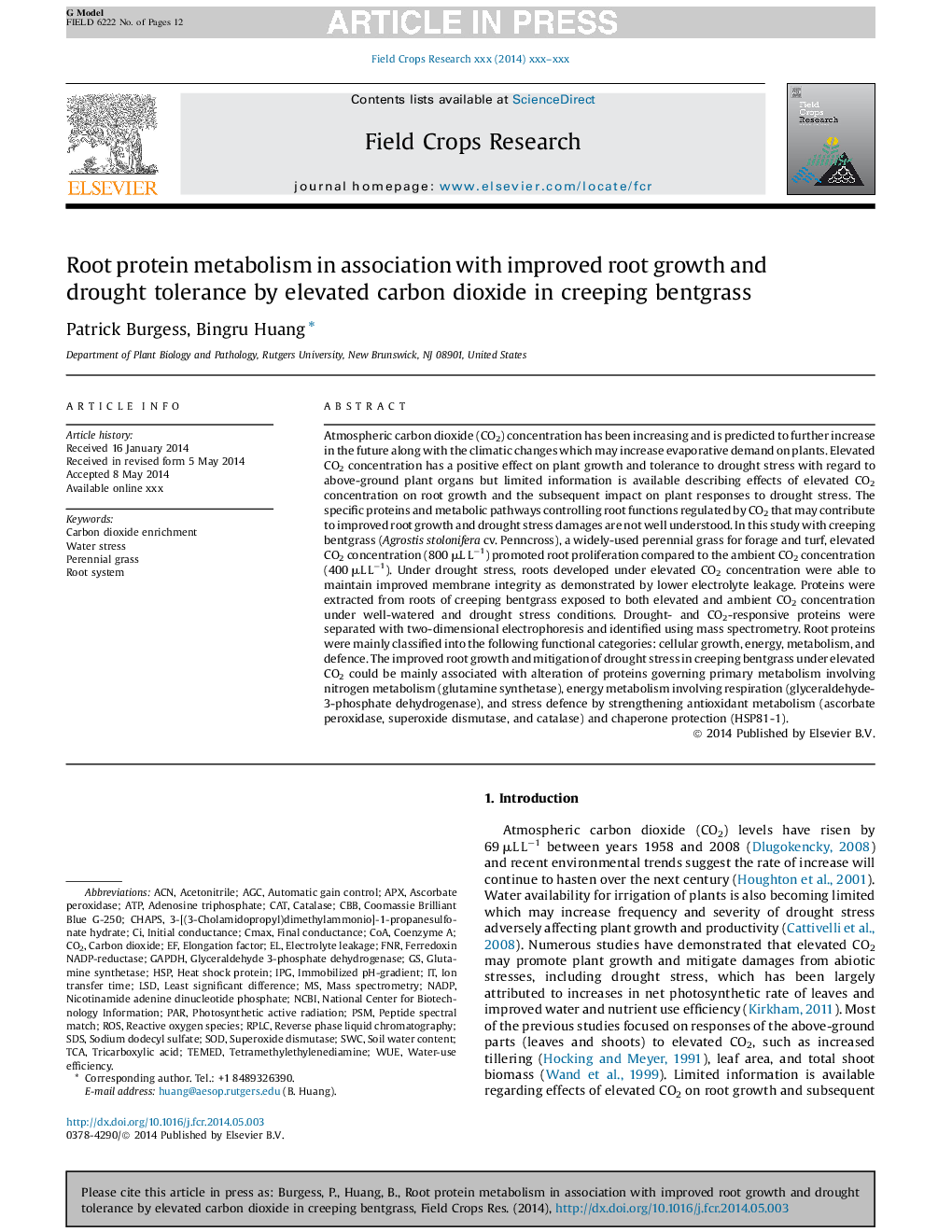| Article ID | Journal | Published Year | Pages | File Type |
|---|---|---|---|---|
| 6375017 | Field Crops Research | 2014 | 12 Pages |
Abstract
Atmospheric carbon dioxide (CO2) concentration has been increasing and is predicted to further increase in the future along with the climatic changes which may increase evaporative demand on plants. Elevated CO2 concentration has a positive effect on plant growth and tolerance to drought stress with regard to above-ground plant organs but limited information is available describing effects of elevated CO2 concentration on root growth and the subsequent impact on plant responses to drought stress. The specific proteins and metabolic pathways controlling root functions regulated by CO2 that may contribute to improved root growth and drought stress damages are not well understood. In this study with creeping bentgrass (Agrostis stolonifera cv. Penncross), a widely-used perennial grass for forage and turf, elevated CO2 concentration (800 μL Lâ1) promoted root proliferation compared to the ambient CO2 concentration (400 μL Lâ1). Under drought stress, roots developed under elevated CO2 concentration were able to maintain improved membrane integrity as demonstrated by lower electrolyte leakage. Proteins were extracted from roots of creeping bentgrass exposed to both elevated and ambient CO2 concentration under well-watered and drought stress conditions. Drought- and CO2-responsive proteins were separated with two-dimensional electrophoresis and identified using mass spectrometry. Root proteins were mainly classified into the following functional categories: cellular growth, energy, metabolism, and defence. The improved root growth and mitigation of drought stress in creeping bentgrass under elevated CO2 could be mainly associated with alteration of proteins governing primary metabolism involving nitrogen metabolism (glutamine synthetase), energy metabolism involving respiration (glyceraldehyde-3-phosphate dehydrogenase), and stress defence by strengthening antioxidant metabolism (ascorbate peroxidase, superoxide dismutase, and catalase) and chaperone protection (HSP81-1).
Keywords
COANADPNCBIACNTCAGAPDHAPXCBBHspSWCPSMAGCTEMEDtetramethylethylenediamineFNRRPLCCoomassie Brilliant Blue G-250CmaxWUESDSCATLSDIPGROSAdenosine TriphosphateATPAcetonitriletricarboxylic acidWater-use efficiencyphotosynthetic active radiationWater stressParleast significant differenceCarbon dioxideroot systemSODsodium dodecyl sulfateSuperoxide dismutaseelongation factor Mass spectrometryCarbon dioxide enrichmentSoil water contentNational Center for Biotechnology Informationelectrolyte leakagenicotinamide adenine dinucleotide phosphateascorbate peroxidaseHeat shock proteinCHAPSPerennial grassCatalaseCO2Reverse phase liquid chromatographyautomatic gain controlcoenzyme AGlutamine synthetaseglyceraldehyde 3-phosphate dehydrogenaseReactive oxygen species
Related Topics
Life Sciences
Agricultural and Biological Sciences
Agronomy and Crop Science
Authors
Patrick Burgess, Bingru Huang,
